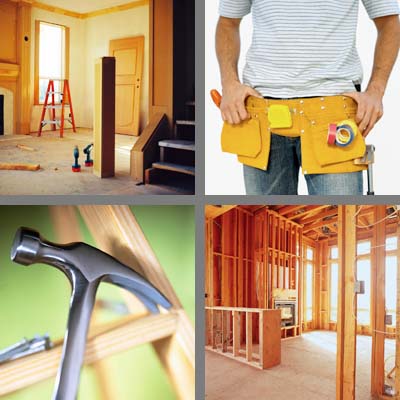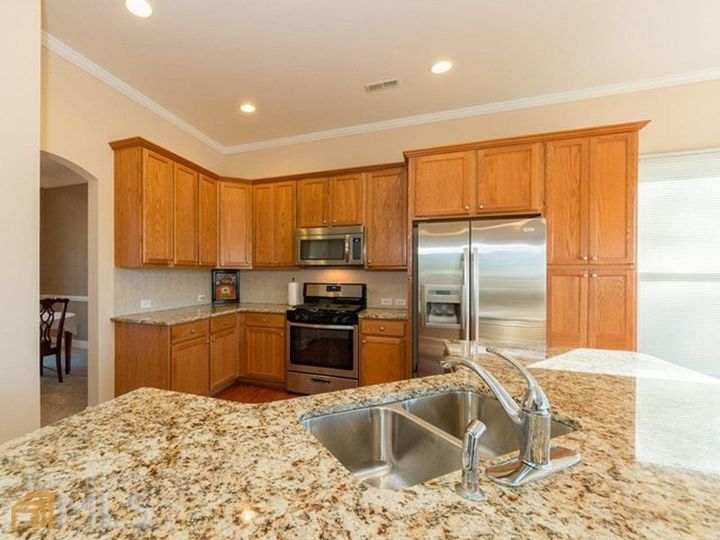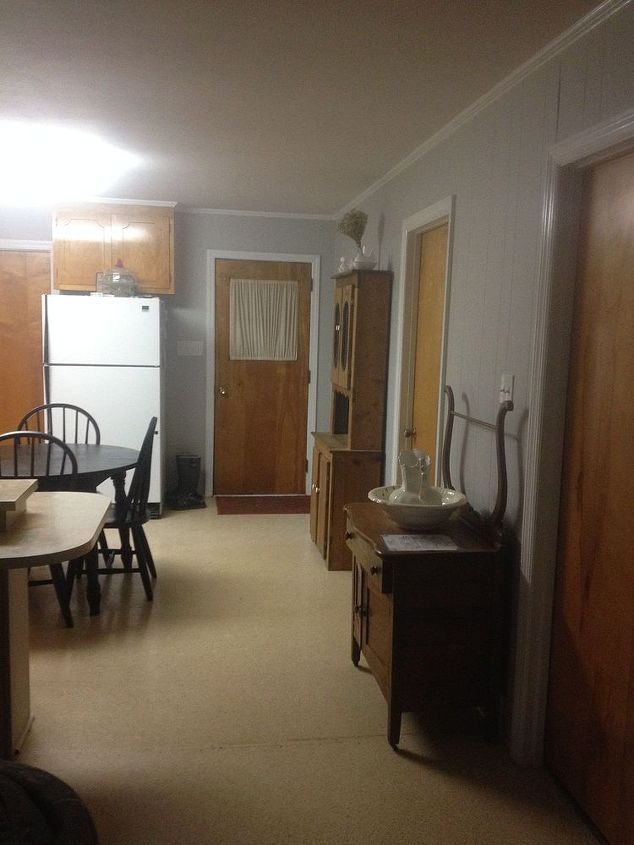"The Old Add 50% Rule" - Is This For Real?

We blogged about an article today, the author is remodeling his kitchen and talked about places to splurge and places to save. The author also wrote this:
"It's difficult to make sweeping generalizations about kitchen renovations...other than the old 'add 50% to the initial estimate' rule"' ( http://bit.ly/RVQdoq )
Add 50% to the initial estimate? Has anyone heard of this? We're assuming this is referring to planning a DIY kitchen remodel; do you think so?
When we give an initial estimate, it only changes if the client decides to change the scope of the project. Our contracts are all-inclusive and guaranteed. This so-called "old rule" somehow never landed on our radar!
We'd love to hear your thoughts & experiences...We think if you have to add 50% to your initial estimate to get the real price, you need another estimate.
-
I agree, I have seen some others do this as well. I use the time VS materials method to do an estimate. Then I add a day to the job in labor to cover any unknown issues I may face. I look at what the material cost is VS my hourly rate and go from there. With the economy so slow I try to give my customers the best value for the price. I had rather have repeat customers.
 Hudson Designs
on Oct 24, 2012
Helpful Reply
Hudson Designs
on Oct 24, 2012
Helpful Reply -
-
We agree with that premise, @Hudson Designs - One of the important things you mentioned there is VALUE. We advise everyone to look for the best value, not the lowest price. We know that quoting a customer the lowest possible price might win us that 1 project; but we quote them the right price and guarantee NO surprise bills at the end of a project. Then our client is completely happy and will refer us without reservation!
 AK Complete Home Renovations
on Oct 24, 2012
Helpful Reply
AK Complete Home Renovations
on Oct 24, 2012
Helpful Reply -
-
I always tell my clients to plan on at least a 20% overage when doing any kind of renovation project. While I try to keep my estimates as close as possible to the quote I provide, I simply tell them we cannot see through walls floors or ceilings and our price is dependent upon our experience in the home repair business and with homes that were constructed the same time with similar designs. I do tell them if they are planning their available funds around the quoted price then they will end up disappointed when they cannot use that special counter or appliance and have to cut costs should a surprise come up when doing the demo. 50% that is a bit high, or the company that is doing this is simply using a square foot method of estimating, they do not know what they are doing and they need to cover their backside with the quote in order to protect themselves. I know as most pros do, many low ball contractors do so and then without hesitation keep hitting the client with extras that in most cases end up costing the client a whole lot more then it would have cost if they choose the contractor whose bid was higher because they included all those items that the low bid contractor left out to get the job.
 Woodbridge Environmental Tiptophouse.com
on Oct 24, 2012
Helpful Reply
Woodbridge Environmental Tiptophouse.com
on Oct 24, 2012
Helpful Reply -
-
This is a great topic and concern for many homeowners looking to renovate. I have to agree that clients almost expect that a project will go over budget, but when planned properly will not occur. As an interior designer, I assist in making sure that the budget is reviewed, product ordered and ready prior to construction, and to make sure a contingency plan is in place to off-set any unexpected problems that may occur with materials or with what's behind the walls. Depending on the size of the job, that number can range from 5-15%. In my experience, that number has never hit 50% and must be reflective of a DIY project. Moreover, it should be stressed that a homeowner receives a contract that states the price, what work will be completed, and how change orders will be handled so there are no surprises in the processes. I agree that "the best value, not the lowest price" is the best approach. Being honest with clients, on budget, and on-time will always result in happy clients and great referrals.
 True Identity Concepts
on Oct 24, 2012
Helpful Reply
True Identity Concepts
on Oct 24, 2012
Helpful Reply -
-
Really great feedback - Thank you! Such important information for anyone starting a renovation.
 AK Complete Home Renovations
on Oct 24, 2012
Helpful Reply
AK Complete Home Renovations
on Oct 24, 2012
Helpful Reply -
-
@AK Complete Home Renovations , two thoughts. First~ There is a difference in estimate vs. bid vs. proposal. and second thought, though not my own, I share this with many people Quote from John Ruskin 1819 -1900 The lowest Bidder. It is unwise to pay too much,but it is worse to pay too little.When you pay too much you lose a little money.... that is all.When you pay too little you sometimes lose everything because what you bought was incapable of doing what it was bought to do.The common law of business balance prohibits paying a little and getting a lot ... it can't be done! If you deal with the lowest bidder it is well to add something for the risk you run and if you do that, you will have enough to pay for something better.
 360 Sod (Donna Dixson)
on Oct 24, 2012
Helpful Reply
360 Sod (Donna Dixson)
on Oct 24, 2012
Helpful Reply -
-
@Four SeasonsGreat quote!!
 AK Complete Home Renovations
on Oct 24, 2012
Helpful Reply
AK Complete Home Renovations
on Oct 24, 2012
Helpful Reply -
-
Surprises behind the drywall are one thing. That cannot be helped. But a lot of the price increases come when the client starts shopping for the details. For instance, a builder presents a contract that has a "lighting allowance". Then you go to select the fixtures and realize how little that "allowance" will buy. Up goes the price. That is not the fault of the contractor. There are 3 morals to this story: 1) When reviewing contracts, be sure to look at the details , like the allowances, to make sure that you are comparing apples to apples. 2) If the details of the design are important to you (or you are one of those people who tends to be drawn to the more expensive options) enlist the help of a designer to review the contract and determine if the pricing is realistic. They are familiar with how much these wonderful things cost and can give an opinion about where you may want to spend a bit more money BEFORE you start. 3) Do not underestimate the value of enlisting help from a qualified designer. They will help you avoid costly mistakes. They can help you make selections that will give you the best bang for your buck. (Think about the cost of repainting the walls because you don't like the color you chose.) They also bring ideas to the table that you maybe would never have thought about but will ultimately enjoy for years to come. I am NOT a designer but easily see the difference between the plain vanilla remodel VS the one that has a WOW factor in the same budget.
 WallsTreat Studio/ Kass Wilson
on Oct 25, 2012
Helpful Reply
WallsTreat Studio/ Kass Wilson
on Oct 25, 2012
Helpful Reply -
Related Discussions
Vinyl plank flooring vs pergo (laminate)
I currently have stinky dirty carpeting in my living room and I want to replace it with a durable flooring that can stand up to dogs and kids.
How to remove popcorn ceiling that has been painted?
Does having a paint over a popcorn ceiling change how I'd remove the popcorn ceiling?
How to apply peel and stick wallpaper?
I want to spruce up my walls with peel-and-stick wallpaper. Has anyone used this before and can advise me as to how to apply it properly?
How to stain wood floor?
I've heard staining is a good technique for updating floors. So how do I stain my wood floor?
Should I re-stain or paint my cabinets?
Edit:””” 3 years later😂 I decided to paint them white and I am so very pleased with the results!We bought a new house with these ugly cabinets. I really cann... See more
Help me with my kitchen - strange layout with 3 doors in it!
I am looking for BUDGET options for my kitchen. It is very strangely laid out. I have 3 doors (laundry, bedroom and outside) that do not help the layout. I am planing... See more





